如今,各组织正在以多种不同的方式利用IoT (物联网)的优势,例如提高效率和安全性、
监控远程和难以接近的设备实现流程自动化、
减少运营对环境的影响确保设备和货物符合法规要求,并节省资金。
例如,试想一下,如果一个市政当局只需改用IoT智能照明,就能同时提高其城市照明系统的能效、减少碳排放并节约成本。这是许多组织和市政当局如何利用IoT取得成果的例子之一。
在本篇文章中,我们将通过一些实际案例,帮助读者了解IoT 的优势,如物联网在流程、可视性、时间管理、成本节约等方面带来的运营提升。
IoT 我们周围的世界
物联网在日常生活中大多不引人注意,因为它大多是 "幕后 "的。然而,IoT (由数百万个通过射频和蜂窝信号相互通信的联网设备组成)一直在工作,处理大量关键流程,并向决策者提供数据和见解。
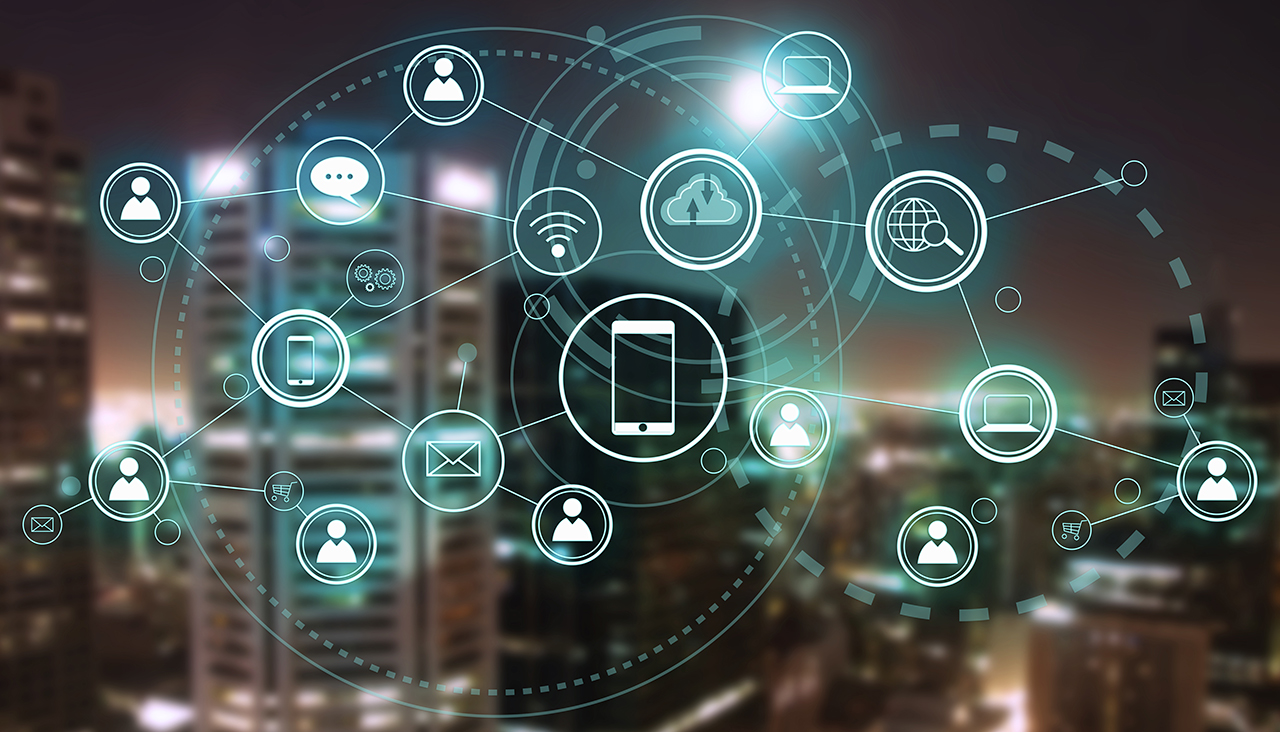
我们都知道IoT 在智能家居领域的应用,以及远程监控住宅或自动调节室内气候的功能。 下面是IoT 在商业、工业、政府和医疗领域的一些例子:
- 监测工业和农业应用中的储罐液位
- 实现工业运行过程自动化,以达到安全、高效和节约成本的目的
- 升级到工业 4.0技术,将边缘计算、人工智能和实时连接结合到工厂自动化等应用中
- 远程监控和管理公用事业中的仪表、重合器和其他设备
- 检测石油和天然气作业中的气体泄漏
- 跟踪运输中货物的位置
- 监控卡车运输和冷藏中易腐货物的温度
- 管理电动汽车充电站和停车计时器的流程和付款方式
- 监控火车和公共汽车的位置,并留意铁轨上是否有障碍物
- 检测土壤湿度和条件,以便进行浇水和作物管理
- 医疗诊所的病人监控,以及输液和其他医疗过程的自动化
这些只是物联网在商业和智能城市应用中广泛且不断增长的用例的几个例子。IoT 项目有什么好处呢?接下来我们将对此进行介绍。
7 的优势IoT
IoT 在商业和工业应用中的优势有很多。其中大多数都以效率为中心--这不仅是因为高效的运营有助于降低成本和减少对地球的影响,还因为在某些情况下,特定流程的效率或信息传递和流程自动化对任务至关重要。在许多情况下,生命就取决于此。
自动化
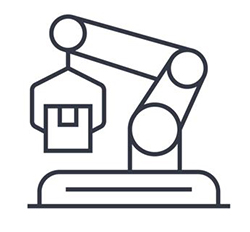 在许多不同领域,全球都在向IoT 自动化方向发展。这在工业系统和制造业等应用中尤为重要。
在许多不同领域,全球都在向IoT 自动化方向发展。这在工业系统和制造业等应用中尤为重要。
例如,检测易燃易爆系统的过热情况至关重要,一旦检测到某些情况,系统就会自动关闭。另一个重要的例子是汽车零件和医疗设备的制造,这些设备必须精确制造,才能在实际运行中完美无瑕。
IoT 解决方案在制造自动化领域带来的优势包括多项人类无法提供的功能:
- 机器能以更高的精度和速度装配零件,从而减少装配过程中的错误
- 自动化还能使工厂延长工作时间而不感到疲劳
- 机器人能快速检测出人眼无法发现的故障
自动化的其他例子还包括:智能交通管理,可改善交通流量并快速引导紧急车辆通过城市;互联汽车技术,可自动控制车辆行为和制动,以确保安全;以及农业领域的自动霜冻风扇,可在检测到霜冻时自动运转。
IoT 自动化用例聚焦
IoT 在农业领域好处多多,而且由于自动化流程机会众多,其采用率正在迅速增长。Bin Sentry 是一家开发农业解决方案以提高效率的公司。

据他们观察,检查饲料仓以确保其库存的人工流程既繁琐又容易出错。不准确的订单和直到快用完时才检查料仓的延误,导致饲料厂不得不争分夺秒地处理紧急订单。这样做的弊端是卡车滚动效率低下,而且还会造成牲畜损失。
该解决方案是首个电池供电、太阳能供电的料箱监控器,旨在以自动化取代检查料箱这项琐碎且容易出错的工作,从而提高准确性。该系统包括建立一个低成本、与互联网连接的高能效传感器网络。
投资回报率非常高。以前,大多数饲料厂每周只能获得一次饲料数据。但 BinSentry 应用程序每天可以从设备上发送六次数据和诊断信息,即使太阳能电池完全失效,也有 90 天的备用电池供电。
有关更多自动化实例,请参阅我们与Sicom Electronics 合作的智能城市照明案例研究,以及我们的博文 "5G 应用和用例"中描述的用例。
预测性维护
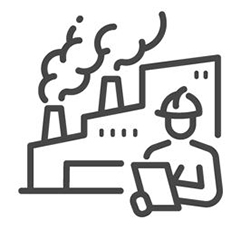 使用IoT 的主要好处之一是 预测性维护这包括对系统和流程进行持续监控,以便在问题导致停机或系统故障之前发现关键指标。
使用IoT 的主要好处之一是 预测性维护这包括对系统和流程进行持续监控,以便在问题导致停机或系统故障之前发现关键指标。
传统上,当设备发生故障、运营停止或系统灾难发生时,机器或系统需要维护的通知就会出现--导致从收入损失到环境破坏、罚款、公关噩梦和失去公众信任等各种后果。
IoT 的优势在于自动感应和报告,因为工作人员根本无法手动监控每个流程。有了IoT预测性维护,当某些情况表明需要派人到现场进行维护时,IT 和运营团队就会收到通知。在许多情况下,服务团队可以携带所需的确切工具和设备到达现场。
预测性维护用例聚焦
Digi 提供强大的连接解决方案,将传感器数据与商业智能连接起来,并与用于IoT IoT系统、可视化和远程管理的指挥中心Digi Remote Manager®集成,从而支持工业 IoT 中广泛应用的预测性维护。
奥的斯电梯是一家全球性企业,在数十万个地点安装了电梯。公司在全球拥有近 33,000 名现场专业人员,为电梯提供服务,保持电梯平稳运行,确保客户满意。
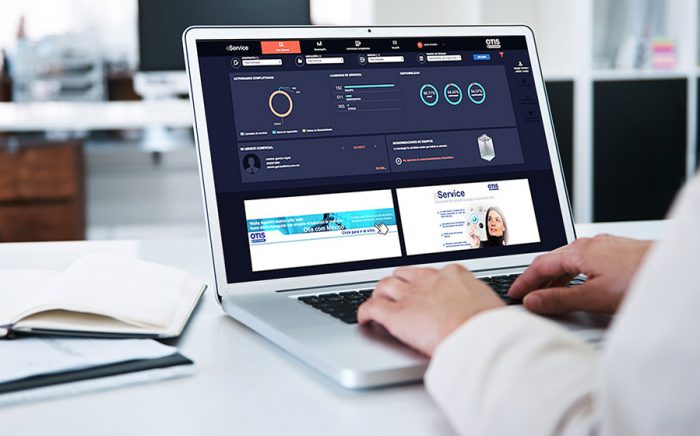
为此,该公司开发了奥的斯 ONE(IoT )解决方案,帮助他们不断优化响应速度。该公司的 "圣杯 "是将快速响应转换为预测响应。Otis ONE 将客户设备数据转化为预测性洞察力,使技术人员能够提前发现潜在问题。
他们也能更好地找出问题所在。IoT 解决方案可提供有关电梯所有组件的重要信息--哪些在工作,哪些不在工作。因此,在需要服务时,专业服务人员可以携带正确的部件到达现场,并以前所未有的速度使电梯恢复运行。
有关 Digi 客户提供的其他优秀预测性维护案例,请参阅FLO如何在其电动汽车充电站中建立预测性维护,以及Wake, Inc.如何建立预测性维护解决方案来监控混凝土养护,以实现快速响应、补救和报告。
流程改进
 改进流程是部署物联网的基本优势之一,因为流程的改进会影响到运营底线的方方面面。考虑 精准农业例如,传感器和联网系统可支持更高效的灌溉系统,该系统可根据传感器读取的土壤条件和天气情况自动运行。
改进流程是部署物联网的基本优势之一,因为流程的改进会影响到运营底线的方方面面。考虑 精准农业例如,传感器和联网系统可支持更高效的灌溉系统,该系统可根据传感器读取的土壤条件和天气情况自动运行。
公用事业也为流程改进提供了绝佳的机会,使公司能够减少前往偏远地点的卡车车次,更快地确定需要服务的准确位置。
流程改进用例聚焦
下面举例说明远程监控如何改善流程,以及预测性维护和其他关键的IoT 优势。
无人值守油田的管理者需要确保分布式油罐有足够的计量化学品。旨在报告油田配料情况的IoT 解决方案可让工作人员随时随地通过 iPad 监控油罐。
下图显示了该应用的示例,其中储罐上的传感器通过无线电设备与蜂窝网络的网关进行通信,然后与收集和显示数据的应用程序进行通信,这样工作人员就可以远程监控储罐,并在特定条件下接收警报。
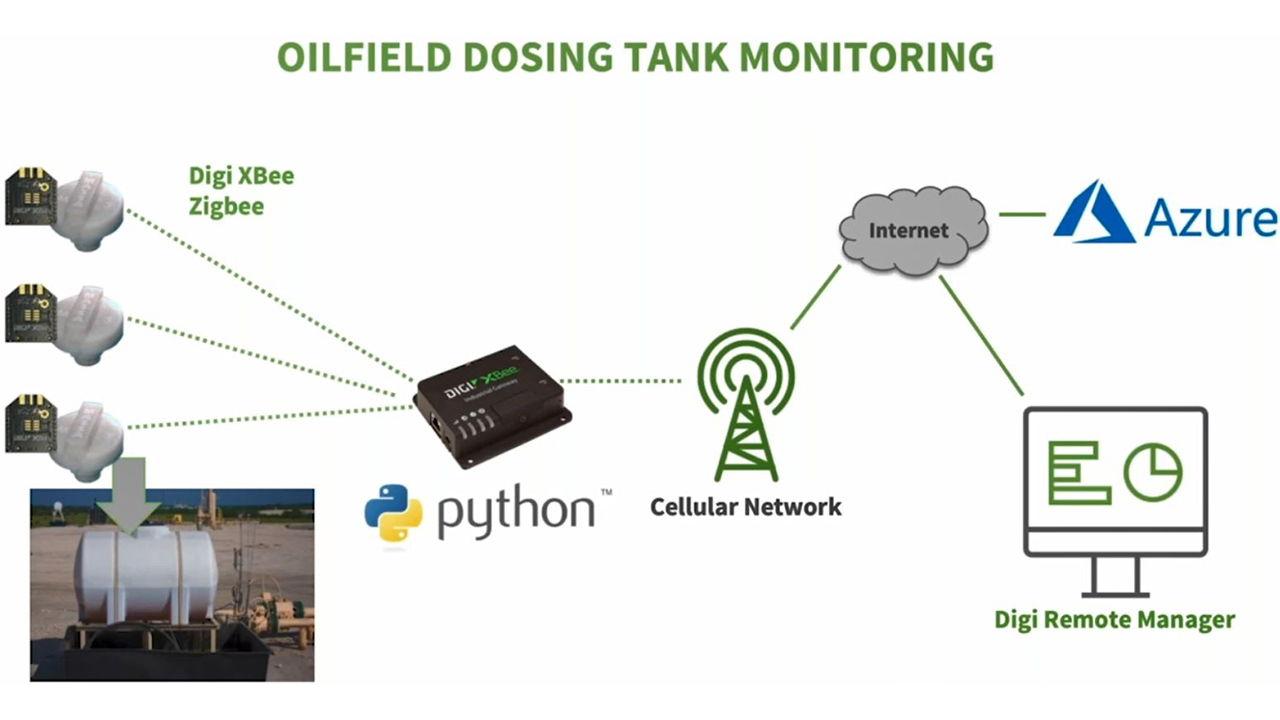
有关 Digi 客户改进流程的其他示例,请参阅WiseConn如何开发 DropControl 来改进灌溉系统,为农民节省资金并帮助减少用水量,以及Nobel Systems如何开发水管理系统,使客户能够集中协调和监控供水系统,防止代价高昂的泄漏。
降低成本
 降低成本也许是物联网项目在各行各业带来的令人惊喜的好处之一。当一个组织能够改善系统正常运行时间、实现流程自动化、降低故障风险和收入损失、获得支持更好决策的洞察力、减少资源使用和对人员的时间要求时,其结果就是提高效率和节约成本。
降低成本也许是物联网项目在各行各业带来的令人惊喜的好处之一。当一个组织能够改善系统正常运行时间、实现流程自动化、降低故障风险和收入损失、获得支持更好决策的洞察力、减少资源使用和对人员的时间要求时,其结果就是提高效率和节约成本。
当然,实现这些目标涉及到采购、配置和部署IoT 系统的前期成本。因此,任何组织的关键是审查投资回报率,即开发和部署系统所花费的时间和成本多久会得到回报。
Digi 的客户通常能从部署中迅速获得投资回报,因为他们可以降低运营开销,减少浪费的工时,而这些工时本可以实现自动化,或者通过更早或更精确的数据来避免问题的发生,同时,由于来自边缘的通知和智能,他们还能快速应对网络中任何地方的挑战。
降低成本用例聚焦
Digi 通过多种方式支持降低成本。让我们来看看bioFeeder如何帮助虾农改进流程,降低经营成本。
对养虾户来说,一个主要挑战是如何喂养分散在数百甚至数千公顷池塘中的贝类。投料机传统上由人工操作,劳动强度非常大。既昂贵又难以保证虾类生产的最佳时间安排;理想的喂食时间安排是全天候每半小时喂食一次,而人工喂食系统不可能做到这一点。
该解决方案是一个由太阳能供电、与云连接的智能饲喂器组成的网络,利用旨在优化虾饲喂周期的算法,所有这些都可以从一个中央位置进行管理。
投资回报率体现得非常快。由于饲料占养虾场生产成本的 40% 以上,该系统的效率改变了一切。与此同时,工人们可以将时间转用于养虾场的其他重要活动。
如需了解更多实例,请阅读ElectriCities如何部署无线路由器和Digi Remote Manager 以实现可靠的连接和远程管理功能,仅第一年就节省了 30 多万美元;以及AFCEC如何通过从陆地线路转换为蜂窝线路,在 6 个月内就节省了巨额资金并实现了投资回报。
改进洞察力
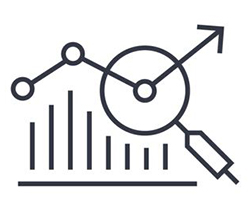 IoT 物联网系统通常是远程、难以接近或分布广泛的设备和流程的耳目。因此,物联网的一些主要优势包括网络范围内的可视性,以及从支持边缘计算的系统中快速获取关键数据,从而提高洞察力。
IoT 物联网系统通常是远程、难以接近或分布广泛的设备和流程的耳目。因此,物联网的一些主要优势包括网络范围内的可视性,以及从支持边缘计算的系统中快速获取关键数据,从而提高洞察力。
在任何联网设备的部署中,网络管理员都需要一个复杂的远程监控和管理系统,如Digi Remote Manager,它可以汇总来自网络边缘的数据,提供有关整个网络健康状况的通知和见解,并在出现安全漏洞时发出警报。这些洞察力使管理员能够积极主动地应对各种情况并管理问题。
改进洞察力用例聚焦
Digi 解决方案支持通过IoT 系统提高对许多垂直行业的洞察力,包括工业流程、水和废水管理、农业和运输。
Evoqua Water Technologies开发了一套系统,其中的蜂窝模块连接到 Microsoft Azure,并利用机器学习深入了解分布式系统的运行情况。该系统收集监测结果,并将其呈现在 Evoqua 的云平台上。
该解决方案满足了客户对更深入了解的需求。他们希望了解实际的模拟读数,希望获得压力传感器和所有供水系统的其他数据。Evoqua 希望确保能够提供预测性洞察力,并快速响应客户需求。
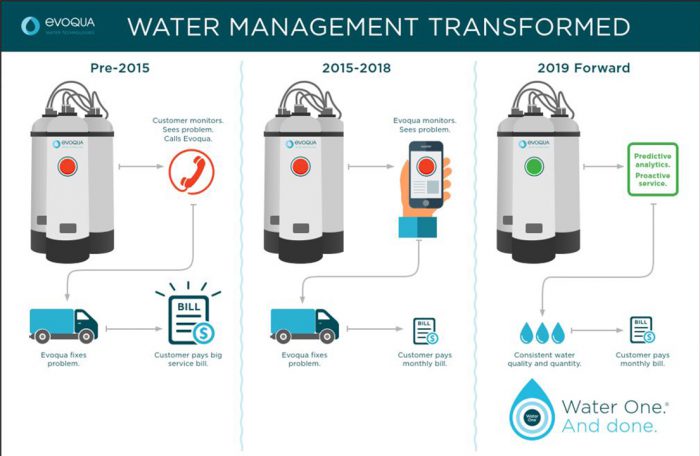
新系统提供了所有这些洞察力,使客户能够更好地管理系统,提高客户满意度,并为 Evoqua 人员主动维护设备提供了机会。
如需了解更多示例,请参阅纽约市交通局如何通过 Digi 设备监控和管理 14,000 个交叉路口的交通,Journeo如何使用IoT视频监控来了解铁路轨道状况,以及Fleetwatch如何监控其数百辆公交车车队。
适应性
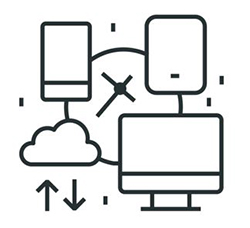 在瞬息万变的世界中,企业必须能够在需要时灵活应变。IoT 为企业带来的最重要的好处之一,就是能够适应新的业务要求、客户需求和不断变化的条件,或根据业务增长或客户需求扩大部署规模。
在瞬息万变的世界中,企业必须能够在需要时灵活应变。IoT 为企业带来的最重要的好处之一,就是能够适应新的业务要求、客户需求和不断变化的条件,或根据业务增长或客户需求扩大部署规模。
有了正确的工具,企业就可以推出联网设备部署--无论是数字标牌、电动汽车充电站、彩票亭、联网车辆还是环境监测应用--然后利用与这些已部署系统的连接,随着时间的推移管理额外的升级。例如,他们可能需要增强功能,向设备发送新配置,或在检测到新威胁时提高安全性。
满足上述各种需求的关键在于先进的远程管理系统,例如 Digi Remote Manager等先进的远程管理系统,使管理人员能够快速更新整个联网设备群的固件,并快速配置和部署新设备。
>
适应性用例聚焦
Digi 在工业IoT的广泛应用中支持预测性维护,其强大的连接解决方案可将传感器数据与商业智能连接起来,Digi Remote Manager®是IoT 系统、可视化和远程管理的指挥中心。
公共建筑和办公楼的供暖和空调系统必须无缝运行,而供暖和空调系统正是需要预测性维护的绝佳范例。Infinitum Electric接受了这一挑战,目标是利用其获得专利的 PCB 定子技术重塑电气化领域,该技术可制造出更智能、更轻、更安静、更环保的电动机和发电机,并提供卓越的效率和耐用性。

他们开发了基于 PCB 连接的电机,并集成了Digi XBee 通信模块,旨在改善尺寸、重量和耐用性,然后添加传感器来监控电机性能的各个方面。然后,他们将数据推送到云端,使客户能够收集运行数据,并对数千台设备组合进行分析,以预测故障或优化维护协议。
有关展示IoT 如何支持适应性的其他用例,请阅读Reborn Electric如何在智利将柴油燃料公交车改装成电动汽车,以及Valmont Industries, Inc.如何利用IoT农业灌溉枢轴的尖端技术,修改设计,通过智能电线杆进入一个重要的新市场。
合规性
 在任何合规性要求较高的行业,如医疗设备和食品管理行业,人类健康是一个关键问题,因此数据和洞察力至关重要。这正是物联网大显身手的地方。
在任何合规性要求较高的行业,如医疗设备和食品管理行业,人类健康是一个关键问题,因此数据和洞察力至关重要。这正是物联网大显身手的地方。
通过使用传感器、网关、边缘智能以及在正确的时间快速提供正确数据的能力,IoT 系统使团队能够可视化其系统,并在测量超出范围时获得通知。此外,他们还能快速生成报告,而无需手动输入数据。
合规性用例聚焦
"冷链 "是指必须在规定温度范围内进行监控和管理的供应链系统。供应链的这一环节跨越了从生产到包装、运输、交付、加工和最终销售的整个过程,包括食品行业生产的所有产品以及药品。

在整个过程中,物品必须保持在规定的温度范围内,而且每个储存或处理物品的地点都必须按照规定的时间表记录温度,以确保符合要求。
由于冷链行业对支持合规性和安全性的解决方案需求巨大,而人工记录流程又存在诸多问题,因此 Digi 成立了SmartSense by Digi部门,为食品、制药和卡车运输行业提供监控和自动记录解决方案。
请观看SmartSense 食品杂货店页面上的视频,了解 Schnuck's 食品杂货店专业人员的经验。他们在店内安装了SmartSense解决方案后,每天用于监控和记录任务的时间从数小时减少到了数分钟,而且还能确保记录的准确性和合规性。
有关IoT 合规性优势的另一个例子,请参阅在费城及其周边地区提供轻轨、地铁和公交服务的南宾夕法尼亚州运输管理局(SEPTA)如何转向 Digi 提供强大的铁路连接,以满足联邦积极列车控制(PTC)的要求--这是一种复杂的列车信号系统,旨在防止因违反速度和信号规定而导致的撞车、脱轨和轨道工人受伤。
流动性
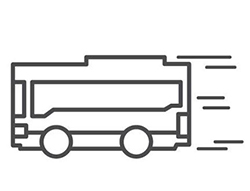 移动性意味着很多方面,因此,为了更好地利用IoT 的优势,我们将重点讨论智能移动性,即智能城市应用中的移动性。
移动性意味着很多方面,因此,为了更好地利用IoT 的优势,我们将重点讨论智能移动性,即智能城市应用中的移动性。
在Geotab 上可以找到智能交通的一个很好的定义:智能交通指的是在使用汽油车的同时,使用其他交通方式,甚至代替拥有汽油车。这可以有多种不同的形式,包括共享乘车、共享汽车、公共交通、步行、骑自行车等等。
如今,我们可以在多种应用案例中看到IoT 支持的移动性:
无线连接以不同的方式支持所有这些应用,从监控公共交通车辆、跟踪租赁滑板车的位置到提供城市紧急车辆路线、管理自适应交通控制等。
观看我们关于优化公共交通的预录网络研讨会
在这次网络研讨会上,我们的演讲者将探讨公共交通面临的挑战,以及市政当局如何利用正确的技术(如下一代公交信号优先)来应对这些挑战。
观看视频
移动性用例聚焦
纽约市交通局的IoT 实施就是一个很好的移动性范例,它通过交通局的交通管理中心提供全市范围内交通流量和交通事故的可视性。当城市的有线基础设施需要升级时,纽约市交通局团队与包括 Digi 和 AT&T 在内的跨职能供应商团队合作,构建了一个无线智能交通系统,以实现交通管理业务的现代化。
该系统在纽约市五个区的 14,000 个十字路口部署了 Digi 蜂窝路由器,提供了全市范围内的全面可视性。在全市范围内,自适应控制可根据情况自动控制交通信号灯,并使工作人员能够与应急小组合作,在需要时主动疏导交通。纽约市交通局位于长岛市的交通管理中心(TMC)运行的智能软件应用程序可适应不断变化的交通模式,缓解交通拥堵。
利用Digi Remote Manager,部署团队能够在现场部署前对每台路由器进行预配置,从而在创纪录的时间内完成部署。Digi RM 不仅支持对整个城市不断变化的情况进行监控,还使团队能够根据需要快速配置新路由器并将其添加到系统中,并在整个网络范围内推出固件更新。
下一步工作